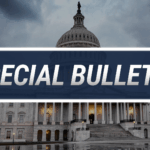
Analyzing Actionable Examples for Catheter-Directed Thrombolysis Success in 2025
Upper extremity coding is a sea of complexity that can easily sink coding accuracy if you are not prepared. Thrombolysis, in particular, poses a high

The Unified Program Integrity Contractors (UPICs) were developed to ensure the integrity of Medicare and Medicaid by identifying and recovering improper payments.
Established to streamline the oversight of Medicare and Medicaid claims, UPICs combine functions previously handled by multiple contractors into a more cohesive system. This article explores the history of UPICs, their structure, geographic regions, and responsibilities, as well as its methods, reversal rates, and financial incentives.
Before the establishment of UPICs, Medicare integrity oversight was managed by a fragmented system of contractors, including Zone Program Integrity Contractors (ZPICs), Program Safeguard Contractors (PSCs), and Recovery Audit Contractors (RACs). These entities operated under varying scopes and methodologies, often leading to inconsistencies and redundancies.
In 2016, the Centers for Medicare & Medicaid Services (CMS) transitioned to UPICs to streamline operations. UPICs aim to improve efficiency, reduce fraud and abuse, and recover overpayments more effectively by consolidating the integrity functions under a single entity within designated geographic regions. Today, UPICs are tasked with both Medicare and Medicaid oversight, addressing fraud, waste, and abuse across both programs.
The UPIC program divides the United States into five distinct geographic regions, each managed by a contracted organization. These contractors are responsible for auditing and investigating claims within their assigned areas:
These contractors are tasked with investigating claims for potential fraud and improper payments within their geographic territories, using advanced analytics and data-driven methodologies.
UPICs perform a variety of tasks to uphold program integrity, including:
One of the most controversial tools employed by UPICs is extrapolation, a statistical method used to estimate overpayments based on a sample of claims. Extrapolation enables UPICs to assess a small number of claims, determine an error rate, and apply that rate across a larger universe of claims submitted by a provider. For example, suppose a sample audit identifies a 20-percent error rate in 100 reviewed claims. In that case, the UPIC might extrapolate that rate to all claims submitted by the provider during the review period, resulting in a significant alleged overpayment.
While extrapolation is a powerful tool for recovering improper payments, it has drawn criticism from healthcare providers, which argue that it can lead to unfair or inflated repayment demands. Providers often dispute these findings, pointing out that errors in the sample may not accurately represent their broader billing practices.
Providers that dispute UPIC determinations can appeal through a multilevel administrative process. Data on reversal rates indicate that many UPIC findings are overturned in favor of providers during appeals. In some cases, this rate exceeds 60 percent, particularly at higher levels of appeal, such as the Administrative Law Judge (ALJ) stage.
This high reversal rate raises concerns about UPIC audits’ accuracy and their extrapolated findings’ reliability. Critics argue that the appeals process burdens providers, which must invest time and resources to challenge erroneous findings.
Moreover, the delays in resolving appeals can create financial strain, especially for smaller providers.
UPICs operate under contracts with CMS and are compensated primarily on a cost-plus basis, meaning they are reimbursed for their operating costs plus an additional fixed fee. Unlike RACs, UPICs are not directly incentivized based on the overpayments they recover. This payment structure is designed to align UPICs’ incentives with their mission of program integrity, rather than creating a profit motive tied to recovery amounts.
However, some critics argue that indirect pressures may still influence UPIC behavior. For example, contractors may feel compelled to demonstrate high recovery figures to secure contract renewals or maintain CMS approval. This perceived pressure has led to concerns about potential overreach or overly aggressive audit practices.
The Unified Program Integrity Contractor system plays a critical role in safeguarding the integrity of Medicare and Medicaid. By consolidating oversight functions and employing advanced tools like data analytics and extrapolation, UPICs have improved CMS’s ability to detect and recover improper payments. However, the system is not without its issues. High reversal rates, concerns about extrapolation, and the burden placed on providers highlight the need for continued refinement and oversight.
As healthcare evolves, ensuring a fair and effective balance between program integrity and provider support will remain essential. With reforms aimed at transparency, fairness, and efficiency, the UPIC program can better fulfill its mission of protecting taxpayer dollars while maintaining the trust and cooperation of healthcare providers.
In conclusion, while UPICs play an essential role in protecting public funds, the system is not without opportunities for improvement. Addressing provider concerns through increased transparency, streamlined appeals, refined use of extrapolation, and enhanced oversight can help create a fairer and more effective audit process. By striking a balance between accountability and support, the UPIC program can continue to fulfill its vital role without alienating the providers it relies on to deliver healthcare services.

Upper extremity coding is a sea of complexity that can easily sink coding accuracy if you are not prepared. Thrombolysis, in particular, poses a high

When it comes to radiation oncology coding, the clinical treatment planning process isn’t just technical—it’s critical, with complex nuances that may spell trouble for coders
Please log in to your account to comment on this article.
Subscribe to receive our News, Insights, and Compliance Question of the Week articles delivered right to your inbox.




Happy National Doctor’s Day! Learn how to get a complimentary webcast on ‘Decoding Social Admissions’ as a token of our heartfelt appreciation! Click here to learn more →
Unlock 50% off all 2024 edition books when you order by July 5! Use the coupon code CO5024 at checkout to claim this offer!
CYBER WEEK IS HERE! Don’t miss your chance to get 20% off now until Dec. 2 with code CYBER24